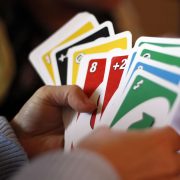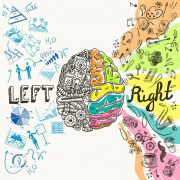Posts
Dogs Can’t Tell You You’re a Piece of Crap
/0 Comments/in Animal Assisted Play Therapy, Play Therapy /by MegghanHow I Became Interested in Animal-Assisted Play Therapy
For a period of time at a Residential Treatment Center I worked at it was ‘bring your dog to work day’ any day you felt like it. So I, having just gotten a dog myself, was super excited when he reached the four-month mark and was allowed to come. This was a very selfish goal of mine. I wanted to bring my puppy to work–how amazing would that be? What I didn’t know was how effective Porter’s personality would be with these youth who had such extreme behaviors.
Dogs are Great Listeners
Their aversion to talking about their feelings based on their history of neglect and abuse was pronounced, but when you put a dog in the room (and one who was fluffy and friendly and calm… almost never) you are able to help them feel comfortable enough to process what hurt them in order to build skills to help them make it through their days.
I saw hardened, aggressive, outwardly mean teens melt to the floor with this puppy in their lap. And as he licked their faces they giggled. Now, as a play therapist I believe there is inherent good in all people, especially children. Porter just helps bring it out a little faster than I can.
Dogs Can’t Call You a Piece of Shit.
And so it’s a lot easier to build a relationship with a kind, friendly animal and transfer that relationship to its kind, friendly therapeutic handler. It’s harder for teens and kids to take the look a dog is giving them and interpret judgmental words out of it. If they do, they usually mention it to the handler. However, when I raise an eyebrow, or open my eyes wide in interest, they are less likely to ask me whether I approve of them, even if I am expressing genuine curiosity in the moment. This blunt inquiry takes much more time in human relationships.
Kind and Friendly, Yes, But He’s Also A Goof
No, Porter is not the perfect therapy dog. He won’t be visiting an ‘old folks’ home’ or hospital anytime soon– he is just too wiggly. But for children who struggle to maintain their behavior, who struggle to stay calm, and who struggle to slow down, he gives them the perfect opportunity to be the teacher. They can feel proud of what they know they are capable of doing. And Porter continues to learn as he grows out of his lab-puppyhood, which may or may not take a decade.
Feelings Uno
/0 Comments/in Parenting, Play Therapy /by MegghanUNO is a great game to help parents learn more about the emotions their children/teens experience. Use this variation at your next family game night and see how your children/teens experience their world. Hopefully you will be able to practice your skills in showing them empathy and in validating their feelings with this fun game!
The link below will send you to a page on my website that will allow you to click on the form!
Enjoy!
5 Ways to Tell if Your Child is Highly Sensitive
/0 Comments/in Parenting Childhood Anxiety /by MegghanDr. Elaine Aron writes about the highly sensitive temperament type, and her work has greatly influenced mine. I teach parents how to understand children who need extra support in various environments. This is the first of my 3-part blog series about the highly sensitive child and how you can support him/her.
There’s a difference between having a child who worries a lot, and one that is highly sensitive.
- Highly sensitive children often experience anxiety and sensory overwhelm. They don’t just worry about a new situation, they also experience the environment to be too loud, too hot, too crowded, their clothes too scratchy, or the fruit too juicy bursting in their mouth.
- A highly sensitive child seems more attuned to the tone of the environment. If a swim instructor speaks to them in a harsh tone, they may not be able to push through this to be excited about the pool and learning how to swim. An anxious child with the same experience can pick up on your happiness about the experience. They can usually ignore the grumpy instructor with encouragement and support.
- Highly sensitive children experience shame after their meltdowns that may lead to another meltdown. This is different than a child who experiences regret for their actions after a tantrum. Highly sensitive children tell themselves they are a bad kid, and often hide these feelings in order to please adults. You will notice this difference when you review with a child what they did wrong if they misbehave. This discussion can often lead to another meltdown.
- Highly sensitive children are perceptive. They notice when others are worried or upset, and usually will work to decrease this person’s unhappiness. This makes them kind, compassionate souls.
- Highly sensitive children are inquisitive. They ask clever, curious questions that you would not think would be something a child of their age would wonder about. Think of your little worrier and how elaborate her worries can get. When highly sensitive children worry to the extent that it interferes with their ability to participate in their daily activities, it may be time to seek professional guidance.
There is nothing wrong with children who have great worries and sensitivities.
Their brains process information differently. They (and their parents) sometimes need support to further understand how to navigate the world while honoring these superpowers. If you would like more information about the highly sensitive child, and to take a quiz to further help you determine whether your child fits this personality type, visit Dr. Aron’s page here.
Next week I will be posting about how highly sensitive children experience their world. This will help us further understand their sensitivities.
Is there something you’d like to know about the highly sensitive child? Let me know in the comments!
Play Therapy and the Brain
/0 Comments/in Play Therapy Childhood Anxiety, Front Page /by MegghanIn focusing on the neuroscience of the field, I hope this post helps increase your understanding of the purpose of using playful means to engage your child/teen.
Recent research in the field of play therapy has focused on the impact of play therapy on brain development. Stewart, Field and Echterling (2016) discuss play as an “emotionally engaging and creative experience that increases levels of oxytocin” in the brain. This hormone fosters feelings of emotional health and connection, supporting the therapeutic relationship. As I create and support a playful environment with my clients, they feel more relaxed, and can then open up more deeply in their treatment.
Without this ability to relax in the session, children and teens would not be able to use their imagination to consider the possibility for behavioral change. Instead, we might see a teen who will “yes” me to death without truly considering trying the skills I am teaching, or a child who feels like he/she is in trouble, and thus denies the need for support altogether by shutting down when he/she enters the office or playroom.
Play therapy is a more developmentally appropriate treatment for children compared to talk therapy (Stewart, Field, & Echterling, 2016). Children learn through play, and thus need the opportunity to generalize their skills in the moment, as opposed to applying a lesson learned earlier in session without practice. Through play therapy, I help build self-awareness and provide an environment for change by verbalizing what I see/hear in session, a process called reflecting. This mindful approach of reflecting encourages the child/teen to pay attention to his/her actions and the impact they have on their own environment.
In using a neuroscience-based approach, I focus on helping children and teens manage their emotions by integrating their right-brain (creative, emotional, expressive) and left-brain (logical, rule-oriented, analytical) functions through playful skills teaching. Play therapy helps youth let their filter down in the conscious, verbal, rigid left side of the brain to express their inner emotions (right side of the brain) within the safety of our relationship. Integration is required for the possibility of creative problem solving, a skill one needs to cope with life’s challenges with less frustration and more persistence.
The mirror neurons in the child mimic my calm, patient demeanor, allowing a child to be patient with themselves as their inner emotions work to make sense of stressful events. They can then persist through difficult topic discussion or play across various sessions and generate more effective reactions to stressful events (Stewart, Field, & Echterling, 2016).
Looking for more information on play therapy’s impact on the brain? Let me know in the comments!
Reference:
Stewart, A., Field, T., & Echterling, L. (2016). Neuroscience and the magic of play therapy. International Journal of Play Therapy, 25 (1) 4-13.
Address
602 Center St. Suite 209
Mount Airy, MD 21771
301-710-9532






